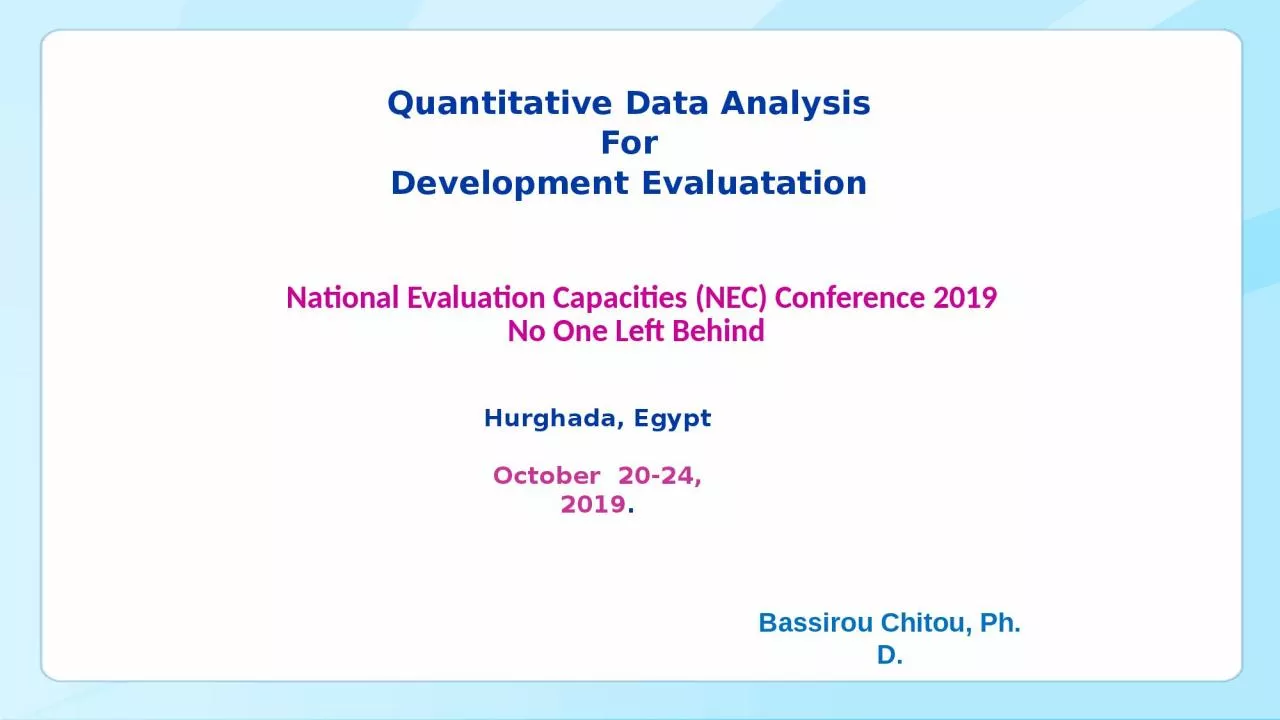PPT-Bassirou Chitou, Ph. D.
Author : smith | Published Date : 2024-02-16
National Evaluation Capacities NEC Conference 2019 No One Left Behind Quantitative Data Analysis For Development Evaluatation Hurghada Egypt October 2024 2019
Presentation Embed Code
Download Presentation
Download Presentation The PPT/PDF document "Bassirou Chitou, Ph. D." is the property of its rightful owner. Permission is granted to download and print the materials on this website for personal, non-commercial use only, and to display it on your personal computer provided you do not modify the materials and that you retain all copyright notices contained in the materials. By downloading content from our website, you accept the terms of this agreement.
Bassirou Chitou, Ph. D.: Transcript
Download Rules Of Document
"Bassirou Chitou, Ph. D."The content belongs to its owner. You may download and print it for personal use, without modification, and keep all copyright notices. By downloading, you agree to these terms.
Related Documents

